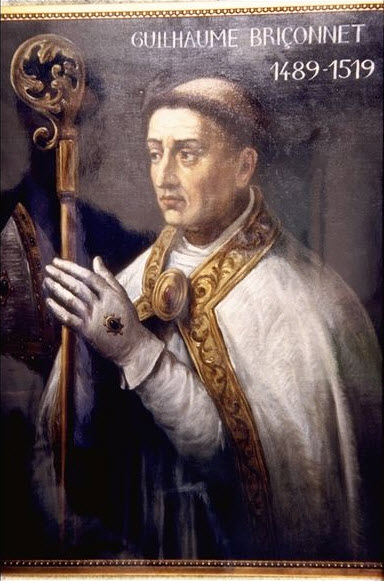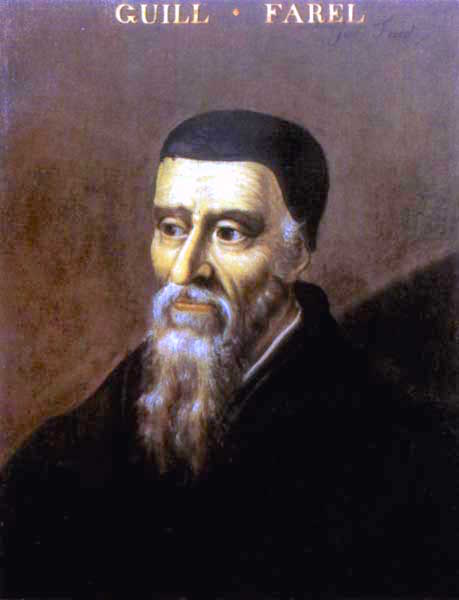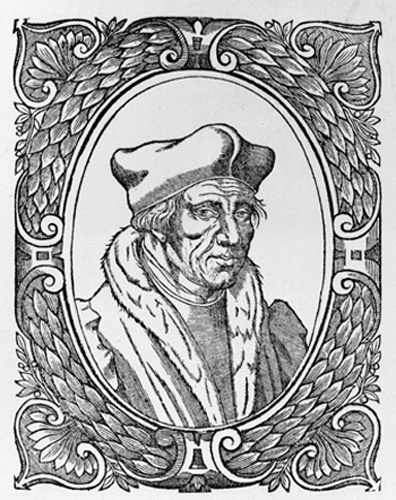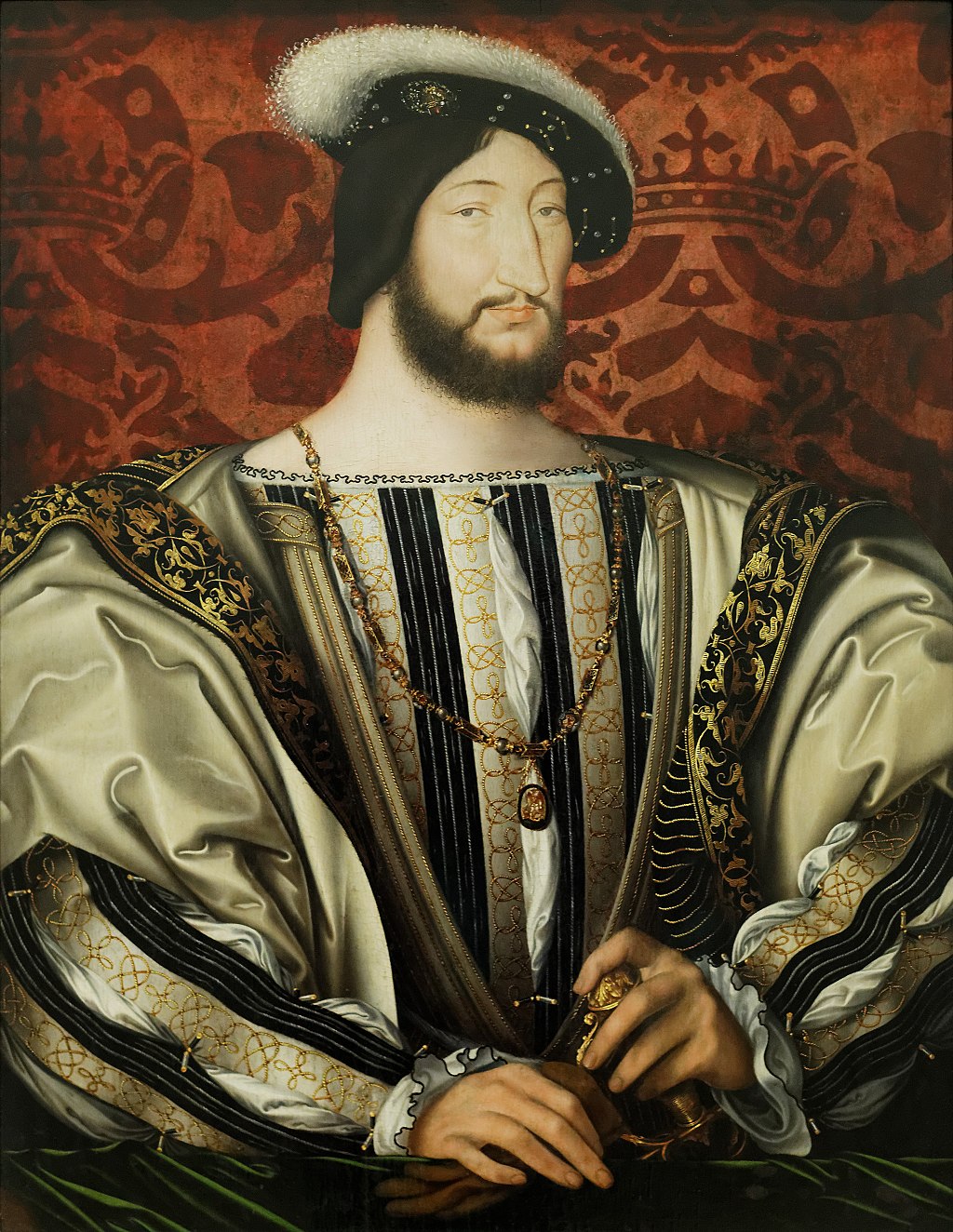
Gradually, after the publication of ‘Ninety-five Theses’ by Martin Luther in 1517, more and people were growing interested in new religious ideas. However, in the early 1520s, Reformation doctrines were still understood by a small number of educated people, but by the end of this decade, they could already be viewed as a national issue. In France, which followed the course of religious tolerance thanks to King François I of France, native reformers formed 3 groups, which would exist until the establishment of the Reformed Church. What were they like?
First, there were reformist prelates who were attracted to the biblical humanism. They shared beliefs with Guillaume Briçonnet, Bishop of Meaux, who launched a program of reform in his diocese, endeavoring to train his clergy and improve monastic discipline. Several evangelical humanists established the so-called Circle of Meaux together with Briçonnet, including prominent humanists such as Josse van Clichtove, Jacques Lefèvre d’Étaples, Guillaume Farel, Gérard Roussel, and François Vatable. They strove to study the Bible rigorously and return to the theology of the early Church. Later Briçonnet backed away from evangelical reform when it proved to be able to incite people to act radically and invite judicial inquiry. After 1526, the bishop only repeated past injunctions against clerical abuses. The Circle of Meaux was dissolved.
Second, those theologians who adhered to Swiss and German reformers were convinced that the Catholic Church in France needed to reject all traditional doctrines and rites. One of them was Guillaume Farel, who together with his friend, Lefèvre, became a member of the Circle de Meaux and was close to Guillaume Briçonnet. Among them, Farel was more influenced by Lutheramism than others, and the College of Sorbonne castigated him. Farel preached about the necessity of reforms fervently. His works attracted attention of the French clergy due to his criticism of the use of images in Christian worship. In fear, Farel escaped from France to Geneva in 1532. Those French reform-minded prelates, humanists, and bishops whose views on the matter coincided with those of Farel went into permanent exile to Germany or Switzerland.

The remaining group included those evangelicals whose ideas were not radical and who, hence, were protected by Queen Marguerite of Navarre, the King of France’s sister. They sought strategic positions from which they could promote the ideas of reform from within. None of them preached about the repudiation of the existing religious practices, aiming primarily at fostering faith among the laity. Raised in accordance with the principles of Renaissance humanism that valued all things progressive and intellectual, King François patronized many humanists, writers, theologians, and evangelicals who enthusiastically embraced the new doctrines, much to the frustration of conservatives. A modus vivendi, or mode of living, reigned: dissenters and those who were interested in new religion were not persecuted unless they openly attacked the Catholic faith, and the monarch ignored the pleas of conservatives for their eradication.
King François’ stance on the matter effectively balanced his cultural and political interests. The ruler was interested in the works of Erasmus, Lefèvre, and Luther for educational purposes, and he could not accept the theologians’ definition of heresy because they considered followers of these men enemies of the faith. The monarch was an enthusiastic patron of the Renaissance arts and letters, and the idea of limiting those who spread knowledge was incongruent with his mindset. The king maintained constant correspondence with Erasmus as the humanist preferred to live in the Netherlands and Switzerland. François and Marguerite de Valois were both on good terms with the renowned Lefèvre. The monarch detested that the Faculty of Theology and the Parlement of Paris attempted to use heresy charges against his protégés as leverage against his decrees to increase taxation, for they felt insecure in his control over the French Church under the Concordat of Bologna of 1516, according to which only François could appoint bishops and abbots.

The third group of evangelicals successfully acted under the protection of the king and his sister. In 1533, Marguerite offered Gérard Roussel, who had been a student of Jacques Lefèvre d’Étaples and a member of the Circle of Meaux, to preach Lenten sermons in Paris. This attracted more than 5 thousand listeners to the city. Preachers from the Sorbonne urged the commoners to rebel against Roussel, calling him a heretic. Under the influence of Marguerite and thanks to his own liberal mindset, François banned the main conservative preachers for instigating a riot and compelled the Faculty of Theology to retract its censure of Margot’s recently published ‘Mirror of the Sinful Soul.’ François had a very affectionate relationship with his sister and wanted to please her, and he saw nothing bad in her connections with evangelicals and in her writings.
Seizing the opportunity, Nicolas Cop (a rector of the University of Paris in late 1533 and a friend of John Calvin) assembled a huge audience on All Saints’ Day in 1533. Cop publicly condemned religious persecution of all kinds and appealed to the world, including the King of France, to allow public preaching of the gospel without any limitations. His passionate sermon included theological themes touched upon in works by Luther and Erasmus. It was:
“The world and the wicked are wont to label as heretics, impostors, seducers, and evil-speakers those who strive purely and sincerely to penetrate the minds of believers with the gospel. . . . But happy and blessed are they who endure all this with composure, giving thanks to God in the midst of affliction. . . . Onward then, O Christians. With our every muscle let us strive to attain this great bliss.”
Due to an explosion of criticism, King François was forced by circumstances to make Cop and his followers leave Paris, firing Cop from his position of the rector of the University of Paris. They took refuge in Switzerland and joined those radical reformers who already lived there. Yet, in France evangelicals still assembled crowds and preached, which was actively done by Roussel. He spoke publicly in Paris during Lent 1534, and the conservatives seethed with rage. The ruler did not do anything against him, most likely due to his sister’s influence.

For a long time, François paid no attention to the grumblings of conservatives, for he did not intend to give them any opportunity to undermine or weaken his own authority. Nonetheless, the Affair of the Placards of 1534 set inquisitorial machinery in motion. Moreover, the ascendancy to prominence at the Valois court of conservative advisors such as Chancellor Antoine Duprat, the Grand Master and Constable of France Anne de Montmorency, and Cardinal François de Tournon was gradually changing the religious fabrics of the monarch’s mind. It seems to be the events that happened on the night of the 17th to the 18th of October, 1534, which both enraged and frightened the king. A multitude of anti-Catholic posters appeared in public places in Paris and in 4 major provincial cities – Blois, Rouen, Tours, and Orléans. The worst was that the ardent reformers fastened one of the posters to the door of the monarch’s bedchamber at Château d’Amboise, which was perceived as both an insult and a breach of security of the king’s grace.
The placards were manufactured by the second group, inspired by the sermons of Guillaume Farel in Geneva and in Swiss other towns. One of Farel’s followers – Antoine de Marcourt, a pastor of Neuchâtel born in Picardy – was the author of those posters. The placards were titled: ‘
“Genuine articles on the horrific, great, and unbearable abuses of the papal Mass, invented directly contrary to the Holy Supper of our Lord, sole mediator and sole savior Jesus Christ.”

This was a provocative and deliberate attack, perpetrated by those evangelicals who ran away from France, on the Catholic doctrines of Eucharist and Mass. The Mass was called ‘blasphemy,’ priests labeled ‘charlatans, pests, and deceitful antichrists’; the doctrine of transubstantiation was named ‘the doctrine of devils.’ These were such “charming” things for even tolerant Catholics! Just imagine: these placards were made at Neuchâtel in Switzerland and then delivered to Paris and other cities through some secured routes and channels. Such an incredible audacity would have shaken any Catholic, a moderate and tolerant one, let alone a Catholic monarch who found one of the posters on his own bedroom’s door. What were the evangelicals thinking about when they acted so outrageously?
King François ordered repressions. 24 reformers were executed, others were imprisoned, and over 70 suspected heretics fled, including the famous Renaissance poet and the monarch’s friend Clément Marot. Processions took place in all the parishes of Paris, and the ruler stood under the canopy where the Most Holy Eucharist was carried, announcing his intention to destroy heresy. Taking into account the connection between the sacrament and the reigning monarch, those who were implicated or suspected of being complicit in the matter were accused of both heresy and Lèse-Majesté (a crime committed against a sovereign power). At the king’s behest, many bookstores were closed, and the publishing of materials, even usual books, became censured. The clergy and the conservative Catholics rejoiced, hoping that the monarch would finally establish the Inquisition like in Spain. Because of a second wave of broadsides which appear in Paris on the 13th of January 1535 in the Affair des Placards, some French Protestants were burned at the stake in front of the Cathedral of Notre Dame in Paris on the 21st of January 1535.

Nonetheless, as his anger abated, François acted in a human way, much to the anger of his councilors. The first wave of persecution ended in July 1535 with the issuance of the Edict of Coucy, which opened the jails and offered amnesty to all exiles, excluding ‘Sacramentarians,’ or those who criticized the Catholic doctrines in the placards, on condition that they would rectify their errors within 6 months. To placate the anger of the German Protestant princes allied with France, the monarch dispatched his envoys to them. After his efforts did not bring the intended result, François extended the pardon to Sacramentarians in 1536, thus reestablishing his religious tolerance. For a few more years, the king again encouraged his and his sister’s intellectual circles to continue all kinds of debates. The alliance with the German Protestant princes was reestablished, much to the king’s relief.

The censorship nevertheless failed to prevent Protestant ideas from spreading clandestinely during the early French Reformation. Any public Protestant leadership could not form due to the measures taken by the king, but the evangelicals learned to spread the new doctrines covertly. The 15 French universities and France’s many municipal schools, which had been opened at the monarch’s initiative, became centers of learning of the reformed faith, which played a huge role in presenting Calvinism and Lutheranism to the elites. It was more difficult to reach undereducated commoners, but some pastors preached that the Bible ought to be written in French, not in Latin, and shared the ideas of Luther and Calvin. Normandy gained a reputation as a ‘Little Germany,’ and many evangelicals were fired from universities or even arrested.
According to the Edict of Fontainebleau of 1540 issued by King François, the tolerance was officially abandoned, turning into persecution of heretics. Despite the measures against the new religion, the Latin works of Calvin, Luther, Bucer, Zwingli, and Melanchthon other reformers circulated among the educated class. The publication of such works was prohibited, but their distribution was not, and often it could not be controlled. Books in French reached a far broader audience, although the level of literacy was not high among commoners. The ideas of John Calvin became popular in France, especially after the publication of the French edition of his ‘Institutes of the Christian Religion’ in 1541. The royal edict banned it in 1542, but the same year some heretic in Rouen was burned quoting from it by heart. The new religion no longer seemed to François a topic for intellectual discussions – it became a clear threat to the existing social order.
All images are in the public domain.
Text © 2020 Olivia Longueville





